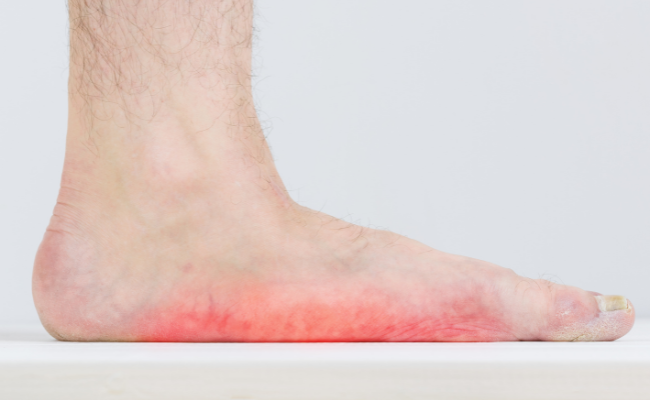How to Treat Flat Feet?
- November 17, 2023
- No Comments

What Are Flat Feet?
Flat feet, also referred to as flatfoot, is a condition characterized by the absence or minimal arch in one or both feet. When standing, the feet's pads make direct contact with the ground, and the arch is not visibly apparent. However, in some instances, the arch may become visible when the foot is lifted.It's noteworthy that all infants are born with flat feet, and the development of arches typically occurs by the age of 6. Nevertheless, around two out of 10 children continue to have flat feet into adulthood. In some cases, adults may experience fallen arches, a condition synonymous with flatfoot, where the arches collapse.For the majority of individuals, having flat feet is not a cause for concern. However, if flat feet result in pain or other complications, various treatments are available to provide relief and address associated issues.
Why Do Flat Feet Occur?
Flat feet can be attributed to a variety of factors, including:
- Genetics: Family history plays a role in the development of flat feet. If your parents or siblings have flat feet, you may be more predisposed to the condition.
- Weak Arch Development: Some individuals may never develop arches in their feet during childhood, leading to flat feet.
- Age and Wear and Tear: As we age, the tendons and ligaments in the feet may weaken, contributing to the flattening of the arches.
- Injuries or Conditions: Certain injuries or conditions, such as arthritis or damage to the tendons, can result in the collapse of the arches.
How to Identify Flat Feet?
Identifying flat feet involves recognizing certain signs and symptoms:
- Visible Signs: Check the inner sides of your feet while standing. If the arches are not apparent, and the entire sole makes contact with the ground, it indicates flat feet.
- Foot Pain: Individuals with flat feet may experience pain or discomfort, particularly in the arches or heels, after prolonged standing or physical activity.
- Swelling: Swelling along the inside of the ankle may occur in individuals with flat feet.
- Foot Fatigue: Feet feeling tired or achy, especially after standing or walking for extended periods, is a common symptom.
Treatment Solutions for Flat Feet:
- Arch Support Shoes: Investing in footwear with proper arch support is essential. Look for shoes designed specifically for individuals with flat feet or those that accommodate orthotic inserts.
- Orthotic Inserts: Custom or over-the-counter orthotic inserts can provide additional arch support and help distribute pressure evenly across the foot.
- Strengthening Exercises: Physical therapists can prescribe exercises to strengthen the muscles in the feet and legs, providing better support for the arches.
- Stretching Routines: Stretching exercises can improve flexibility and reduce tension in the muscles and tendons that support the arches.
- Weight Management: Maintaining a healthy weight is crucial, as excess weight can contribute to the strain on the feet and exacerbate flat foot symptoms.
- Medications: Nonsteroidal anti-inflammatory drugs (NSAIDs) can be used to alleviate pain and reduce inflammation associated with flat feet. However, they are typically a short-term solution.
- Braces and Splints: In some cases, braces or splints may be recommended to provide additional support and help maintain proper foot alignment.
- Custom Orthotics: A podiatrist can create custom orthotic devices tailored to the individual's foot structure, providing optimal arch support and alignment.
- Surgical Intervention: In severe cases where conservative measures are ineffective, surgical procedures may be considered. These can include tendon lengthening, joint fusions, or implant insertion to correct the arch.
Benefit Points of Treating Flat Feet:
- Pain Relief: Effective treatment can alleviate pain and discomfort associated with flat feet, improving overall comfort during daily activities.
- Improved Mobility: By addressing the underlying causes of flat feet, individuals can experience improved mobility and ease of movement.
- Prevention of Complications: Treating flat feet can help prevent complications such as overpronation, shin splints, and joint problems that may arise due to improper foot mechanics.
- Enhanced Physical Activity: With proper treatment, individuals with flat feet can engage in physical activities more comfortably, enhancing their overall fitness and well-being.
- Customized Care: Treatment plans are often tailored to the individual, considering the severity of the condition, lifestyle, and specific symptoms, ensuring a personalized approach to care.
Comments (0)